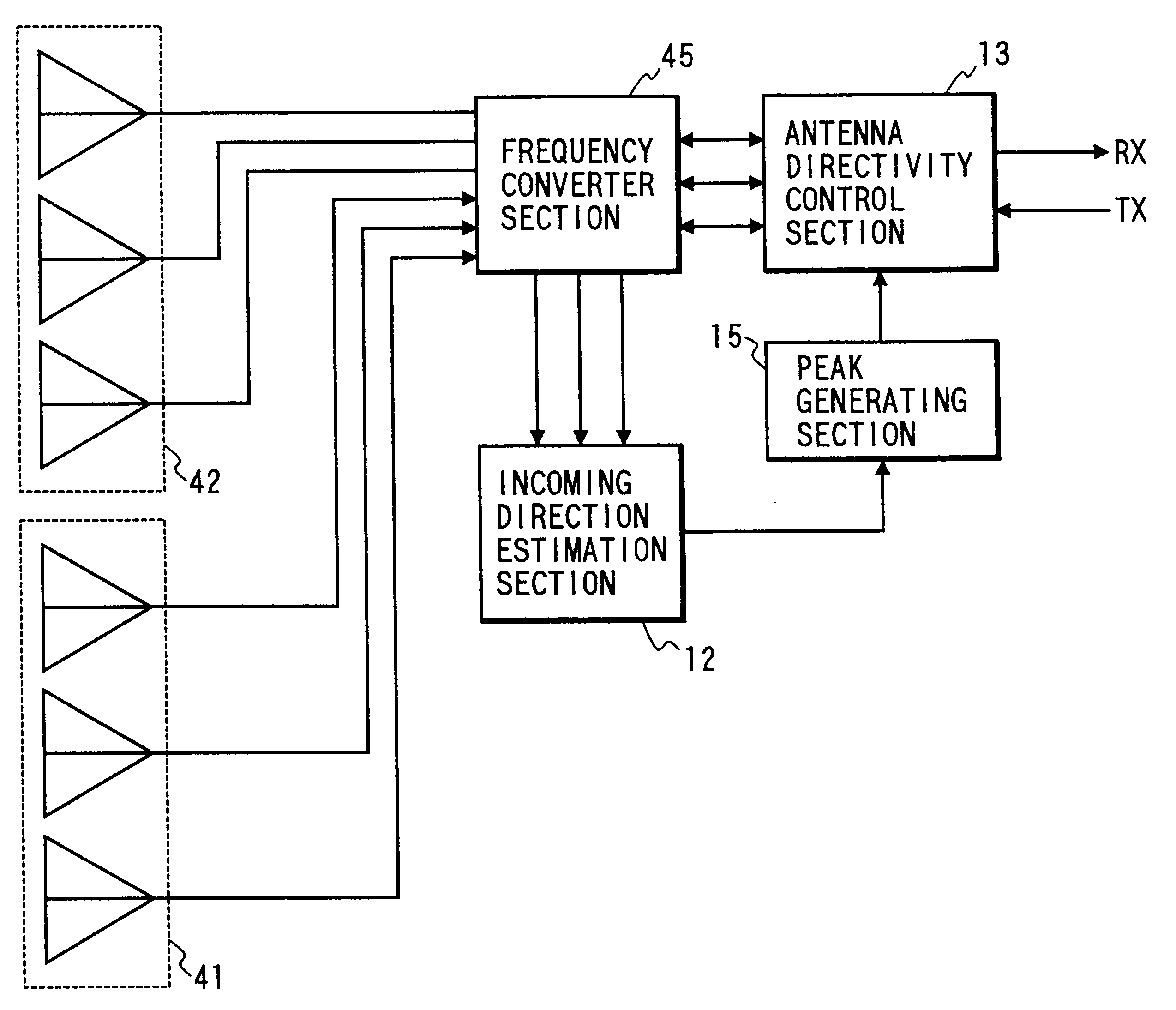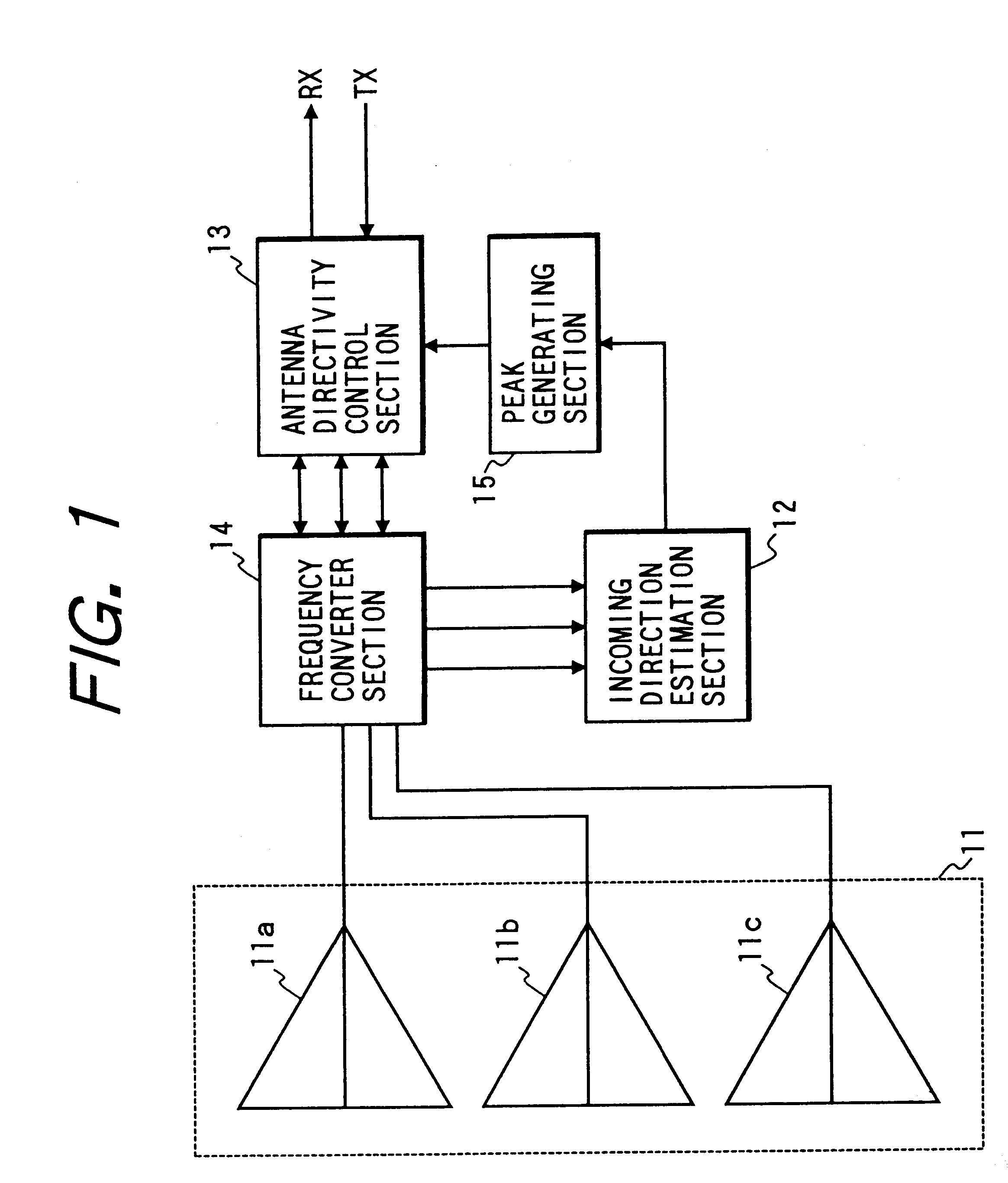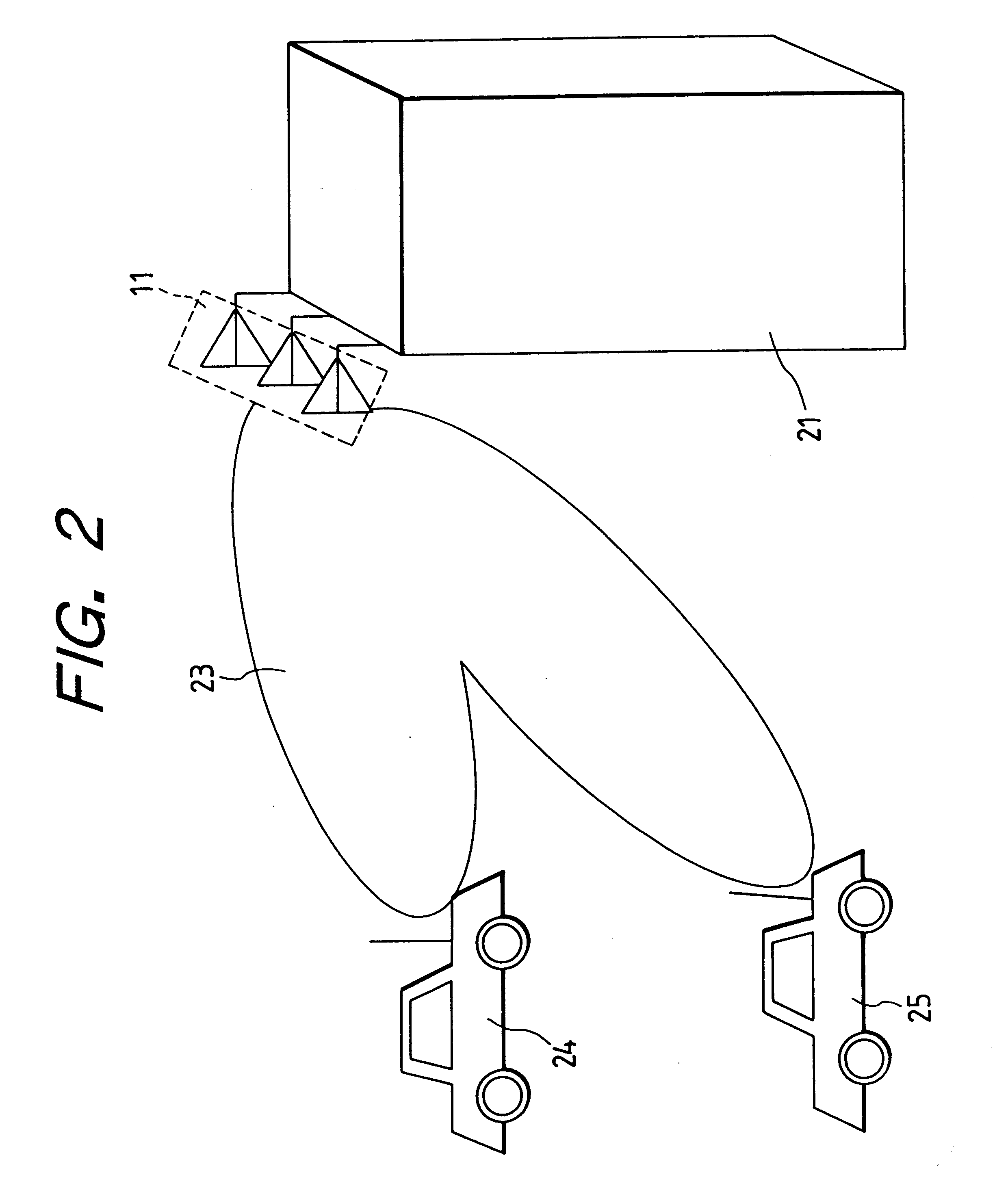Directivity control antenna apparatus for shaping the radiation pattern of antenna of base station in mobile communication system in accordance with estimated directions or positions of mobile stations with which communication is in progress
a technology of directivity control and antenna apparatus, which is applied in direction finders, differential interacting antenna combinations, instruments, etc., can solve the problems of limited channel frequency and frequency bandwidth, communication is only possible, and the number of channel frequencies and frequency bandwidths is limited, so as to achieve the maximum number of mobile stations which can be accommodated by a mobile communication system
- Summary
- Abstract
- Description
- Claims
- Application Information
AI Technical Summary
Benefits of technology
Problems solved by technology
Method used
Image
Examples
first embodiment
Embodiments of the present invention will be described in the following, referring to the drawings. FIG. 1 is a system block diagram of a directivity control antenna apparatus according to the present invention. In FIG. 1, 11 is an array antenna of a base station of a mobile communication system. The array antenna 11 is formed of a plurality of antenna elements, designated here as 11a, 11b, 11c, and can be for example a microstrip antenna, or an array of spaced dipole antennas having rear reflector elements. 12 is an incoming direction estimation section which operates on received signals obtained by the elements of the array antenna 11, to estimate the respective incoming directions of radio waves transmitted from mobile stations. 15 is a peak generating section, which operates on direction data supplied by the incoming direction estimation section 12, to generate control signals for controlling an antenna directivity control section 13 such as to produce peaks in the directivity o...
third embodiment
As described hereinabove, it is only possible for the incoming direction estimation section to obtain accurate direction information for each of the mobile stations from which radio waves are received, and an accurate estimate of the total number of these mobile stations, if that number of mobile stations is no greater than the total number of elements of the array antenna whose signals are used for direction estimation. FIG. 19 is a system block diagram of the invention which enables that limitation to be overcome. In FIG. 19, 51 is a first array antenna, which is normally used to obtain received signals for incoming direction estimation purposes, and 52 is a second array antenna, which is normally utilized as a data transmitting and receiving antenna. 53 is an incoming direction estimation section, 54 is an antenna directivity control section, 55 is a frequency conversion section, 56 is a received signal strength judgement section, and 57 is a peak generating section.
The operation...
fourth embodiment
Before describing the present invention, some basic principles of a linear array antenna which is an essential feature of that embodiment will be summarized, referring first to FIG. 23. This illustrates the relationship between radio waves Sm(t) which are incident on a linear array antenna having elements E that are arrayed with a spacing d. The incoming direction of the radio waves is expressed here by the angle em between that direction and a normal to the array direction of the antenna. As illustrated, there will be a phase difference between the signals obtained from adjacent elements of the antenna, due to the path difference d.sin .THETA.m between the distance travelled by a wave front in reaching these elements. However when the incoming direction of radio waves is estimated for such an antenna, e.g. by using the MUSIC method, and if the antenna can receive radio waves from directions extending in 360.degree. about its array axis, then the angle which is thereby estimated rep...
PUM
 Login to View More
Login to View More Abstract
Description
Claims
Application Information
 Login to View More
Login to View More - R&D
- Intellectual Property
- Life Sciences
- Materials
- Tech Scout
- Unparalleled Data Quality
- Higher Quality Content
- 60% Fewer Hallucinations
Browse by: Latest US Patents, China's latest patents, Technical Efficacy Thesaurus, Application Domain, Technology Topic, Popular Technical Reports.
© 2025 PatSnap. All rights reserved.Legal|Privacy policy|Modern Slavery Act Transparency Statement|Sitemap|About US| Contact US: help@patsnap.com



